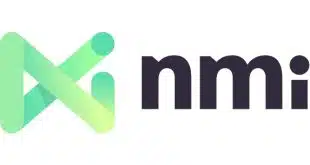Consumers are paying fewer bills than they were in 2009, but paying more of them online and through mobile devices. Between 2009 and 2011 total consumer bill payments fell from 16.6 billion to 16.1 billion, according to a report released this week by Boston-based Aite Group LLC.
The decline is being driven largely by consumers consolidating credit card balances into one account and billers offering more bundled payment options, such as cable, phone and Internet service on a single bill. Other factors influencing this trend are consumers paying off loans to reduce their monthly debt obligations and lenders closing high-risk accounts in the wake of the recession.
“Economic conditions are influencing consumer bill payment, as people who are or have been unemployed in recent years are paying off loans and consolidating credit card balances and other loans into a single low-interest loan,” says Aite Group research director Gwenn Bézard, the author of the report. “As the economy picks up, we expect people to take on more debt and the volume of bills to begin growing again.”
Entitled “Consolidator Bill Payments: A Vendor Update,” the Aite report predicts total consumer bill-payment volume will grow less than 1% annually to reach 16.7 billion payments by 2016, up from an estimated 16.3 billion in 2013. As the number of bills grows, Aite expects consumers to pay more of them online through bill-payment consolidators, such as banks, that enable consumers to pay all their bills through a single Web site, as opposed to the biller-direct model in which consumers go to an individual biller’s Web site to pay, according to the report.
Aite projects that payments through consolidators will grow about 4.3% annually between 2012 and 2016, totaling 3 billion or 18.2% of total consumer bill payments by 2016, up from 2.5 billion or 15.9% of consumer bill payments in 2012.
As consumers pay more of their bills online, they are starting to increase their use of mobile devices to do so. Aite projects that bill payments through consolidator Web sites using a mobile device will jump from 50 million transactions in 2012 to 620 million by 2016, for a compound annualized growth rate of nearly 90%.
Aite also projects mobile bill payments will represent 20% of the consolidators’ volume in 2016, up from 2% in 2012. In terms of total bill payments, mobile payments originated through consolidators will represent 3.7% of consumer bill payments by 2016, up from 0.3% in 2012.
“Mobile bill payment is an extension of mobile banking, which is drawing in more and more consumers,” says Bézard. “Consumers are moving more toward the use of mobile devices, such as smart phones and tablet computers because of the convenience and portability these devices provide. Outside of work, consumers are touching a computer with less frequency.”
The increasing popularity of online bill payment also is prompting more banks to move away from processing such transactions themselves and focusing more on improving consumer interfaces for their bill-pay applications. They’re turning over the processing tasks to such companies as Fiserv Inc., Fidelity National Information Services Inc. (FIS), Online Resources Corp., which recently was acquired by ACI Worldwide Inc., and Jack Henry & Associates Inc. In 2012, four full-service processors handled about 85% of all consolidator bill payments in the U.S., according to Aite. Aite expects their collective market share to rise to 88% by 2016 as more banks give up processing transactions in-house.
“Transaction processing is a commodity and the business case for in-house processing is getting tougher to make for all but the largest banks,” says Bézard. “Third-party processors are investing in their platforms every year, and smaller banks don’t have the resources to make that kind of capital investment in a commodity business year after year.”
As more banks exit bill-payment processing, Bézard expects them to focus on improving their online banking interfaces by adding such features as e-bills. Several holdouts to e-billing among the Top 50 banks are expected to offer the service in the next 12 to 24 months, and more processors are making e-billing solutions available to banks. An e-bill mimics the information presented in a paper bill in comparison to the minimal information typically available on a consolidator bill, such as payment amount and due date.
Aite predicts 418 million e-bills will be distributed in 2014, up from 205 million in 2012. Consolidator e-bills will represent 2.5% of all consumer bills by 2016, up from 1.3% in 2012.
“E-billing is a way to improve the overall online bill-payment experience,” says Bézard.



